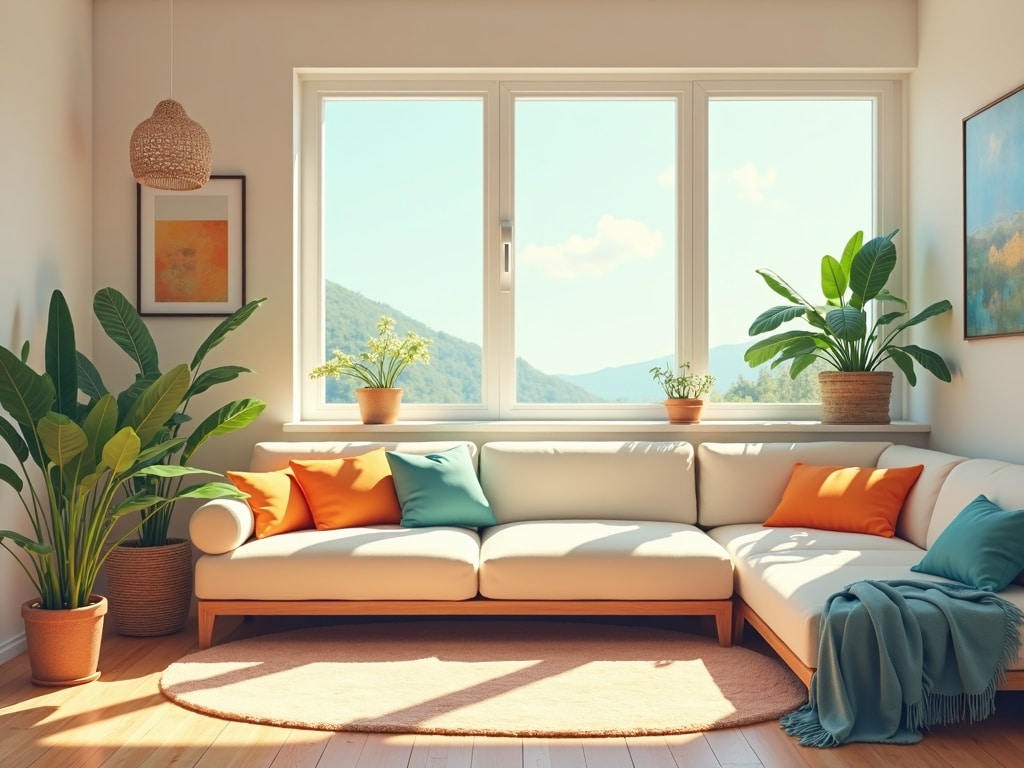How to Create a Chemical-Free Home: A Guide to Holistic Health and Sustainability
Imagine a home where every breath you take is clean, every surface you touch is safe, and every product you use nourishes rather than harms. This isn’t a utopian dream; it’s the reality you can create by embracing a chemical-free lifestyle. In a world saturated with synthetic compounds, taking control of your indoor environment is a powerful act of self-care and a significant contribution to a healthier planet.
Why Go Chemical-Free? Understanding the Risks
The modern home is often a cocktail of hidden chemicals. From cleaning supplies to furniture, many everyday items release volatile organic compounds (VOCs) and other potentially harmful substances into the air. These chemicals can contribute to a range of health issues, from mild allergies and respiratory problems to more serious conditions with long-term exposure. Children, pregnant women, and individuals with pre-existing health conditions are particularly vulnerable.
- Respiratory Issues: Chemicals like formaldehyde (found in some furniture and building materials) and chlorine (in cleaning products) can irritate the lungs and trigger asthma attacks.
- Allergies and Skin Sensitivities: Many detergents, soaps, and personal care products contain synthetic fragrances, dyes, and preservatives that can cause allergic reactions and skin irritation.
- Hormone Disruption: Certain chemicals, known as endocrine disruptors, can interfere with the body’s hormonal system, potentially leading to developmental and reproductive problems.
- Long-Term Health Risks: Some chemicals commonly found in household products have been linked to an increased risk of cancer and other serious illnesses.
Beyond the immediate health concerns, the widespread use of chemicals in our homes has a significant environmental impact. Many of these substances end up polluting our waterways, harming wildlife, and contributing to climate change. Embracing a chemical-free lifestyle is a step towards a more sustainable and responsible way of living.
Step 1: Identify and Eliminate the Culprits
The first step in creating a chemical-free home is to identify the most significant sources of chemical exposure. This involves taking a critical look at the products you use and making informed choices about alternatives.
Cleaning Supplies: The Front Line
Conventional cleaning products are often packed with harsh chemicals like bleach, ammonia, and synthetic fragrances. These chemicals can irritate your skin, lungs, and eyes, and they contribute to indoor air pollution. Fortunately, there are many effective and natural alternatives.
- Baking Soda: A versatile cleaner and deodorizer. Use it to scrub surfaces, unclog drains, and freshen carpets.
- White Vinegar: A natural disinfectant and degreaser. Dilute it with water to clean counters, windows, and floors.
- Lemon Juice: A natural antibacterial agent and deodorizer. Use it to clean cutting boards, remove stains, and freshen the air.
- Castile Soap: A gentle and effective all-purpose cleaner made from vegetable oils.
- Essential Oils: Add a few drops of essential oils like lavender, tea tree, or eucalyptus to your cleaning solutions for added antibacterial and fragrance benefits.
You can easily create your own chemical-free cleaning solutions using these simple ingredients. There are also many commercially available eco-friendly cleaning products that are formulated with plant-based ingredients and free of harsh chemicals.
Personal Care Products: What You Put On Your Body
Personal care products like soaps, shampoos, lotions, and cosmetics are another significant source of chemical exposure. Many of these products contain synthetic fragrances, parabens, phthalates, and other potentially harmful ingredients. Switch to natural and organic personal care products that are made with plant-based ingredients and free of synthetic chemicals.
- Read Labels Carefully: Look for products that are labeled fragrance-free, paraben-free, and phthalate-free.
- Choose Certified Organic Products: Organic certification ensures that the products are made with ingredients that have been grown without pesticides or synthetic fertilizers.
- Make Your Own: Consider making your own personal care products using natural ingredients like coconut oil, shea butter, and essential oils.
Furniture and Home Furnishings: Hidden Sources of VOCs
New furniture, carpets, and paints can release VOCs (volatile organic compounds) into the air for months or even years. Choose furniture made from solid wood or sustainable materials, and opt for low-VOC or no-VOC paints. Air out new items before bringing them into your home to allow VOCs to dissipate.
- Solid Wood Furniture: Avoid furniture made from particleboard or MDF, which can contain formaldehyde.
- Natural Fiber Carpets and Rugs: Choose carpets and rugs made from wool, cotton, or jute.
- Low-VOC or No-VOC Paints: These paints release fewer harmful chemicals into the air.
- Secondhand Furniture: Buying used furniture is a great way to avoid VOC emissions from new items.
Step 2: Improve Indoor Air Quality
Even if you eliminate all of the sources of chemical exposure in your home, indoor air can still be polluted with dust, pollen, and other airborne particles. Improving your indoor air quality is essential for creating a healthy and comfortable living environment.
Ventilation: Fresh Air is Key
Open your windows regularly to ventilate your home and allow fresh air to circulate. This is especially important when you’re cleaning, cooking, or using products that may release VOCs.
Air Purifiers: Filtering Out Pollutants
Consider using an air purifier with a HEPA filter to remove dust, pollen, pet dander, and other airborne particles from your home. Look for an air purifier that is specifically designed to remove VOCs.
Houseplants: Natural Air Filters
Houseplants can help to improve indoor air quality by absorbing pollutants and releasing oxygen. Some of the best air-purifying plants include snake plants, spider plants, and peace lilies.
Aligning with Your Natural Circadian Rhythm: A Guide to Holistic Health and Sustainability
Reduce Dust and Allergens: Regular Cleaning
Dust and allergens can accumulate in your home, contributing to poor air quality. Vacuum regularly with a HEPA filter vacuum cleaner, and dust surfaces with a damp cloth to avoid spreading dust into the air.
Step 3: Sustainable Practices for a Healthier Home
Creating a chemical-free home is not just about eliminating harmful chemicals; it’s also about embracing sustainable practices that promote a healthier environment for you and your family.
Reduce, Reuse, Recycle: Minimize Waste
Reduce your consumption of disposable products and packaging. Reuse items whenever possible, and recycle materials that can be recycled. This will help to reduce your environmental impact and minimize the amount of waste that ends up in landfills.
Conserve Water and Energy: Sustainable Living
Conserve water and energy by using water-efficient appliances, turning off lights when you leave a room, and using energy-efficient light bulbs. This will help to reduce your carbon footprint and save money on your utility bills.
Choose Sustainable Materials: Eco-Friendly Options
When making purchases for your home, choose products made from sustainable materials like bamboo, organic cotton, and recycled materials. This will help to support sustainable industries and reduce your impact on the environment.
Embrace Minimalism: Less is More
A minimalist lifestyle can help to reduce your exposure to chemicals and toxins by reducing the number of products you bring into your home. It can also simplify your life and create a more peaceful and relaxing living environment.
Making the Transition: A Gradual Approach
Creating a chemical-free home is a journey, not a destination. It’s not necessary to make all of these changes overnight. Start by focusing on one or two areas at a time, and gradually work your way towards a more chemical-free lifestyle. Be patient with yourself, and celebrate your progress along the way.
The Rewards of a Chemical-Free Home
The benefits of creating a chemical-free home extend far beyond just your physical health. You’ll also experience a greater sense of well-being, a deeper connection with nature, and a more sustainable way of life. By taking control of your indoor environment, you’re creating a sanctuary for yourself and your family, a place where you can breathe easy, live vibrantly, and thrive in harmony with the world around you. Embrace the journey, and discover the transformative power of a chemical-free home.

